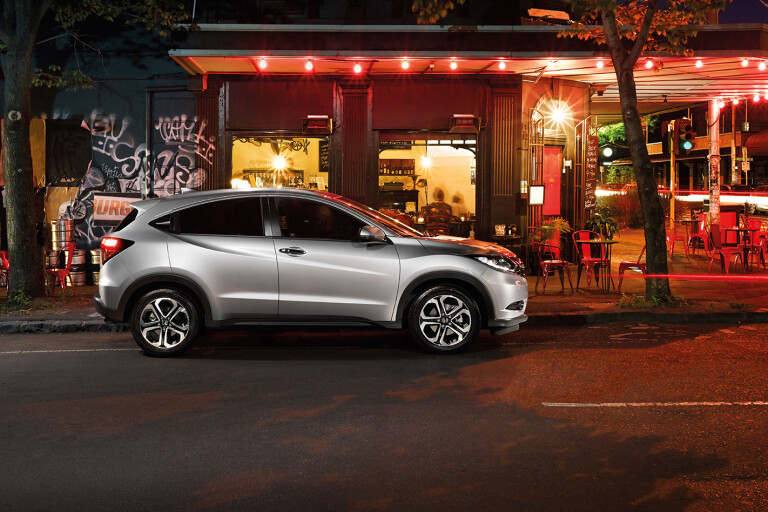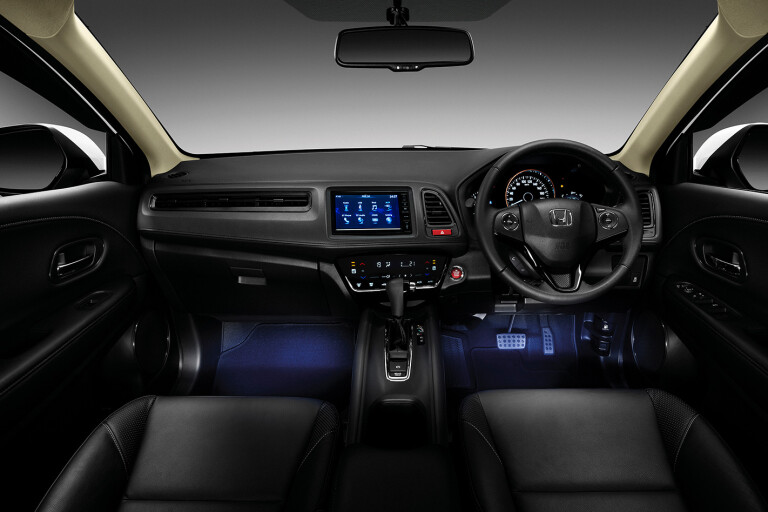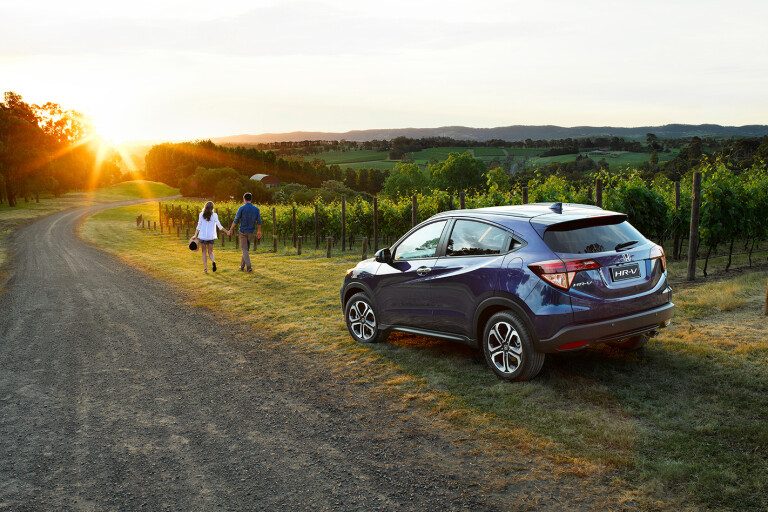
As the Honda HR-V enters middle age, we take an in-depth look at the top end of the Japanese company’s entry-level SUV range
TELL ME ABOUT THIS CAR
The latest version of the sharply styled and well-equipped Honda HR-V – it has sold here as a boxy SUV before, but what seems a lifetime ago – was added to the Japanese car maker’s Australian showrooms early in 2015. Since then, satellite navigation was included last year as standard equipment – the only significant running change made to the Mazda CX-3 fighter since its launch.
However, in that time we’ve seen keen, new competitors including the Hyundai Kona, Mitsubishi Eclipse Cross and an all-new Subaru XV enter the fray in what is one of the most hotly contested corners of Australia’s new-car market. Can the CR-V afford to stand still?

The version we’re looking at here is the range-topping HR-V VTi-L costing from $33,340. For an extra $1000 you can add a safety pack that includes automatic emergency braking, a lane diversion monitor and headlights that will automatically dip the high beams in the face of oncoming traffic.
STRENGTHS
- It remains a good looking compact SUV. Okay, the design is a little more mainstream than some, but compared with the forced, heavy styling of competitors including the plasticky Hyundai Kona, bug-eyed Nissan Juke, fluid-retaining Ford EcoSport and the split window-tailgated Mitsubishi Eclipse Cross, it’s actually pleasing and resolved to look at.
- It comes well equipped. The VTi-L sits on 17-inch alloy wheels, and inside there are creature comforts such as dual-zone climate control air-conditioning, a powered driver’s seat, self-dimming rear-view mirror, plenty of leather trim, and an enormous sunroof with a proper sunshade, not a screen. There are LED headlights and even keyless entry and engine start.
- It’s a versatile interior. The HR-V is based on the likeable Honda Jazz, and carries over the same versatility, including the Magic Seat system that allows the front pews to fold almost flat, contributing to load space. A near flat rear floor leaves plenty of room for two adults, and the boot space is generous. A pair of cupholders mounted in the centre console even have a false floor that will allow them to take different shapes ranging from a cup of coffee to a one-litre water bottle.

- It’s pleasing to look at inside. The instrumentation is clear, touch-sensitive switches replace traditional buttons, and the aircon vents running across the passenger side of the dash add an intriguing design element.
- The ride and handling are good. The HR-V uses the same suspension – MacPherson front, torsion beam rear – as the Jazz. We’ve had no real complaints about the Jazz’s dynamic abilities, and the same goes for the SUV. The suspension is made slightly stiffer on the HR-V because it weighs more than the Jazz, but it’s still pretty good, even on rough city roads.
- The steering is excellent for the city. It’s light enough to shuffle the HR-V into a tight sport, aided by front and rear parking sensors and a reversing camera, and yet still feels good at higher speeds.

WEAKNESSES
- The entire HR-V range is front-drive only. Competitors offer all-wheel-drive alternatives which are handy if you’re using your soft-roader-styled ride to make regular trips to the snow or the beachfront, where the extra traction is a distinct advantage. It means the HR-V is more suited to city car duties than an outdoors lifestyle.
- Honda won’t let you buy an entry-level $24,990 HR-V VTi, or the mid-spec $27,990 VTi-S, and fit it with the safety pack. It means you have to buy the $33,340 VTi-L if you want the $1000-added-cost automatic city braking function – a feature that’s standard on some much cheaper entry-level rivals.
- The combination of the HR-V’s 1.8-litre engine and a continuously variable transmission, both borrowed from the Jazz, are a little underwhelming in the heavier HR-V. The engine lacks low-down torque, and the CVT isn’t good when stepping off the line. Combine the two, and the HR-V is a bit slow to get away from the traffic lights. Itr also has a penalty on fuel use.
- The HR-V has a 50-litre fuel tank. It will officially drink 6.9L/100km, but in city driving that could easily be 20 percent more. Because the fuel tank is so small, you’ll be visiting the petrol station regularly to top it up. There’s also no fuel-saving stop-start engine tech helping things; look to rivals for what they’re doing.
- The satellite navigation system’s graphics look like a colourised 1990s version of Donkey Kong. There’s nothing fine or detailed about it; the patched-in head unit that also serves as the radio just serve up the basics.

- There’s no digital speedo or head-up display. The dash and multimedia screen are both set very low, so moving eyes to take in either require a big movement away from the road ahead. If you’re trying to adjust a radio station in stop-start traffic, best put up with the poor choice of music and focus on the road ahead.
- The vertical rear door handles are recessed high on the trailing edge of the doors. It’ll be okay once you’re used to it, but rush to pick up Granny from bingo late one night when it’s chucking rain down sideways and you might have a very different opinion of how well the form-over-function feature works.
ANY RIVALS I SHOULD CONSIDER
Plenty. This is a crowded corner of the market, with something to suit all tastes. Browse through the Ford EcoSport, seriously well-equipped Haval H2, Mazda CX-3, Nissan Juke, unproven MG ZS, Renault Captur, the sharp-driving Suzuki Vitara at the more value-driven end of the market. Try the Fiat 500X, Holden Trax, Hyundai Kona, Mitsubishi ASX, and Peugeot 2008 as similarly priced rivals, and even some more expensive options including the Citroen Cactus, Jeep Compass and Renegade, Nissan Qashqai, and Toyota C-HR.
COMMENTS